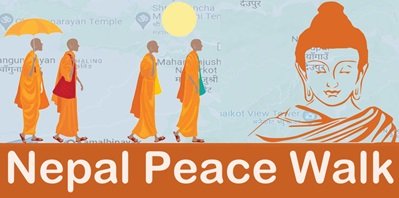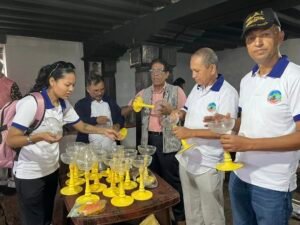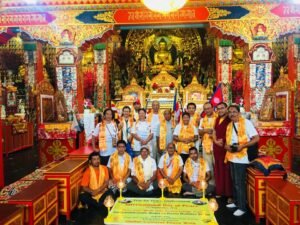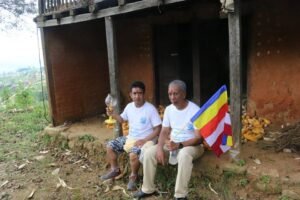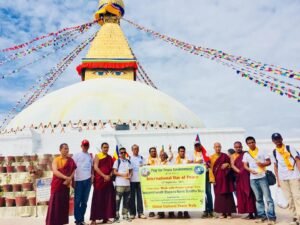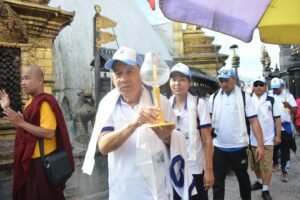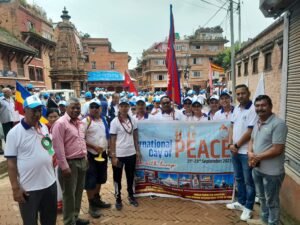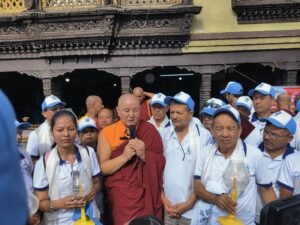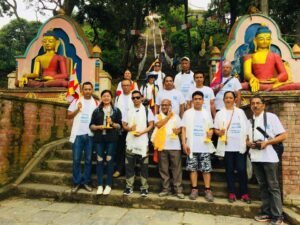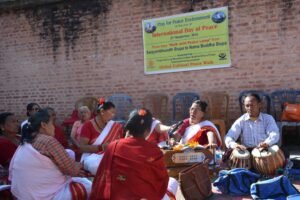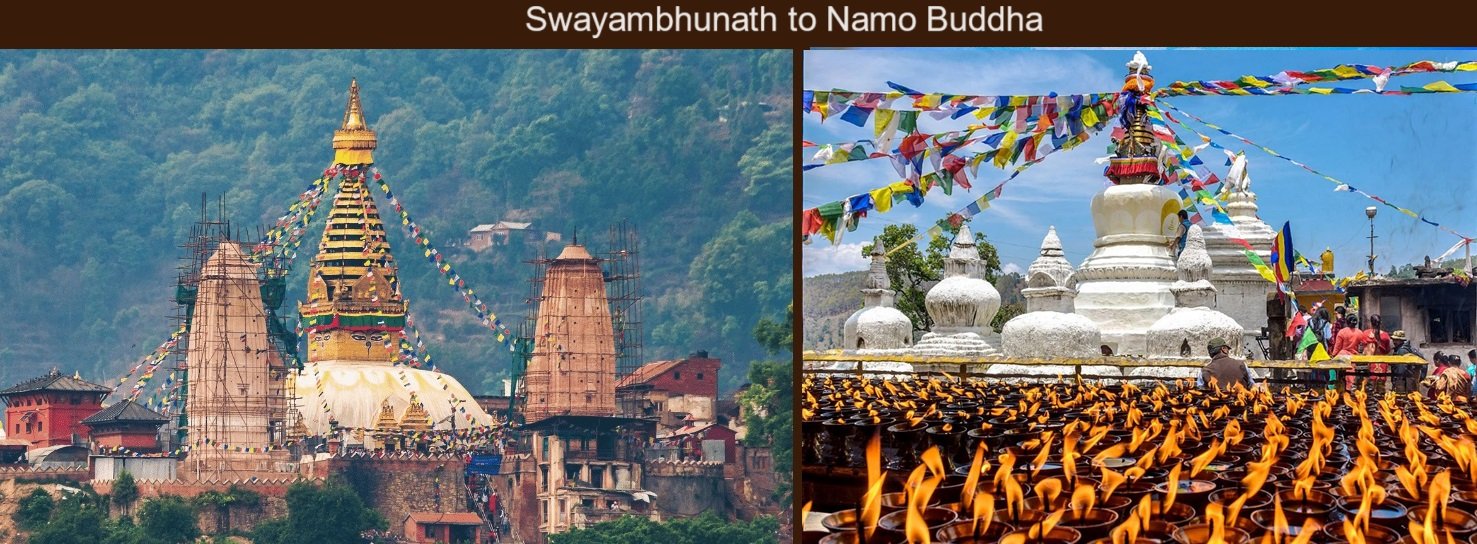
Day one walking route
Swayambhunath Stupa – also known as the Monkey Temple, is one of the oldest and most significant religious sites in Nepal. Its history dates back over 3,000 years, with its origins intertwined with the legendary founding of the Kathmandu Valley. According to folklore, the valley was once a lake, and a lotus flower grew in its center. The revered sage Manjushree, upon seeing the beauty of the valley, cut a gorge at Chovar with his sword, draining the water and making the land habitable. The lotus flower transformed into a hill, and the Swayambhunath Stupa was built atop it.
Historically, the stupa’s origins are traced to the Licchavi period, around the 5th century AD, making it one of the oldest stupas in Nepal. However, the site has likely been a place of worship long before the formal construction of the stupa. Over the centuries, it has undergone several renovations and expansions, reflecting a blend of various architectural styles and religious influences, including Hinduism and Buddhism.
The name “Swayambhunath” translates to “self-existent one,” referring to the belief that the stupa emerged spontaneously from the earth. The stupa is adorned with colorful prayer flags, intricate carvings, and iconic Buddha eyes on each side of the main stupa, symbolizing wisdom and compassion.
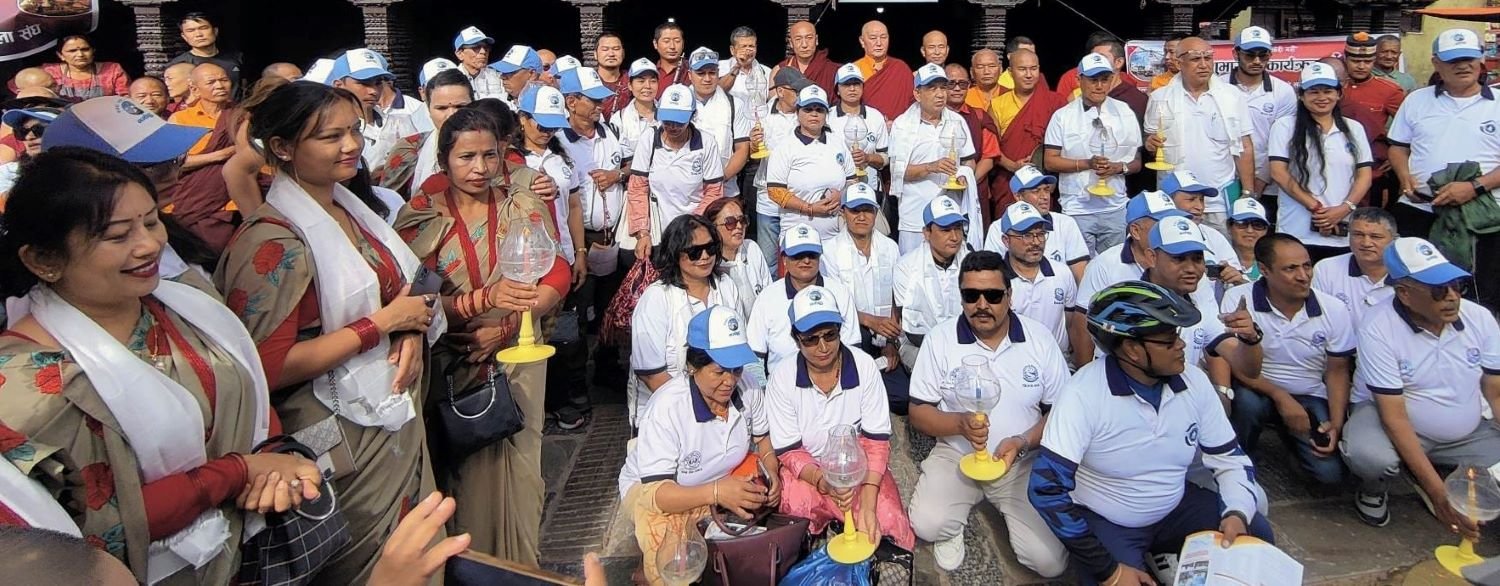
Throughout its history, Swayambhunath has been a focal point for both Buddhist and Hindu pilgrims. It has weathered earthquakes, invasions, and political changes, yet it remains a symbol of resilience and spiritual significance in the Kathmandu Valley. Today, it stands as a UNESCO World Heritage Site, attracting visitors from around the world who come to admire its beauty, soak in its spiritual ambiance, and enjoy panoramic views of the Kathmandu Valley below.
Shree Shree Gha Vihar
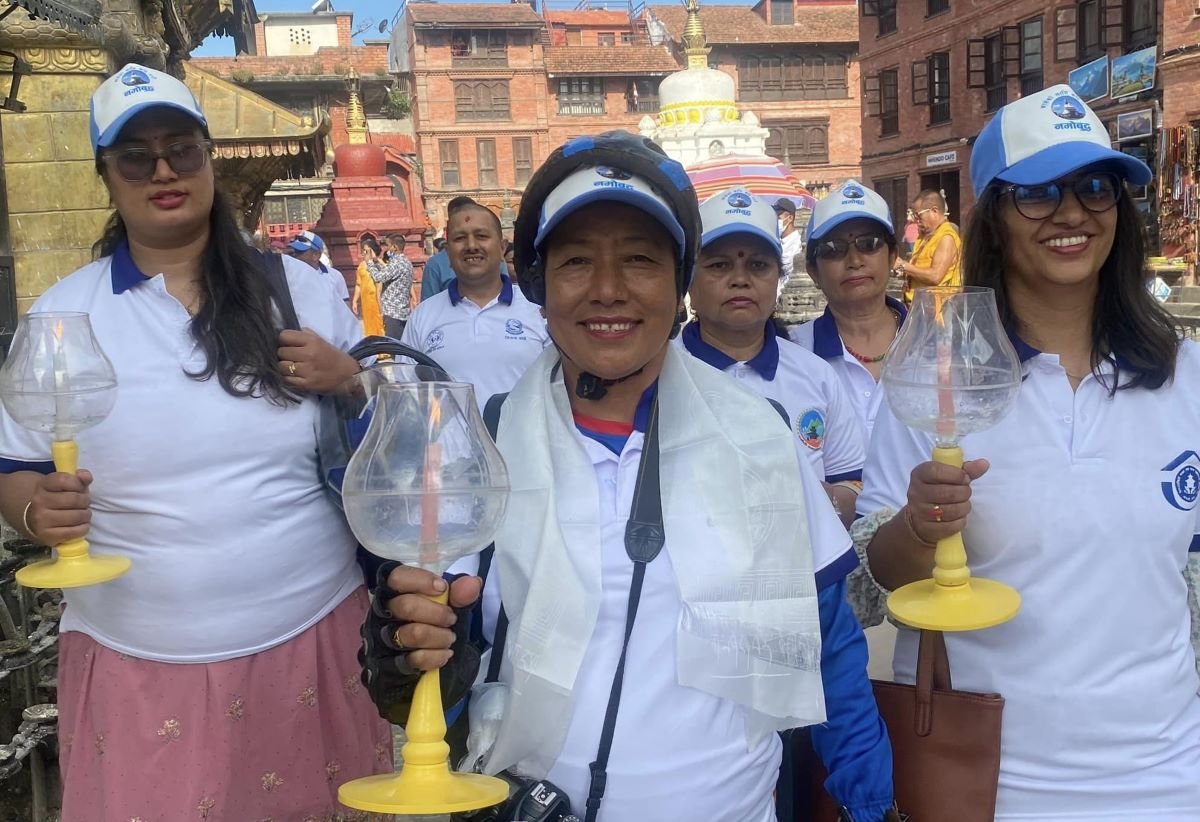
Shree Shree Gha Vihar also known as Shree Ghah Gumba, is a Buddhist monastery located in center of Kathmandu city, Nepal. Its history is intertwined with the rich tapestry of Buddhism in the Kathmandu Valley.
The monastery was founded during the Licchavi period, which spanned from the 4th to the 9th century AD, making it one of the oldest monasteries in the region. It was established by a group of Buddhist monks who sought a serene and secluded location for their spiritual practice.
Over the centuries, Shree Gha Vihar has served as a center for Buddhist learning, meditation, and worship. It has weathered political changes, invasions, and natural disasters, yet it has remained a steadfast symbol of Buddhist spirituality in Kathmandu.
The monastery is known for its traditional Newar architecture, characterized by intricate woodcarvings, pagoda-style roofs, and ornate decorations. Inside the monastery, visitors can find sacred relics, statues of Buddhist deities, and vibrant murals depicting scenes from Buddhist scriptures.
Throughout its history, Shree Gha Vihar has played a vital role in preserving and promoting Peace teachings and practices in Nepal. It continues to be an important pilgrimage site for both local devotees and international visitors seeking spiritual enlightenment and tranquility amidst the bustling city of Kathmandu.
Charumati Vihar – also known as Charumati Stupa, is an ancient Buddhist stupa located in Chabahil, Kathmandu, Nepal. It is named after Princess Charumati, who was the daughter of Emperor Ashoka of India.
According to traditional accounts, Princess Charumati was a devout Buddhist who lived during the 3rd century BC. She traveled from India to Nepal and is said to have established the stupa to enshrine relics of the Buddha. Charumati Vihar is believed to have been built around the same time as the famous Swayambhunath Stupa, making it one of the oldest stupas in the Kathmandu Valley.
The stupa’s architecture reflects a blend of Indian and Nepali styles, with a square base and a hemispherical dome on top. It is adorned with intricate carvings, statues, and prayer wheels, creating a serene and sacred atmosphere for visitors.
Throughout its history, Charumati Vihar has undergone several renovations and restorations, reflecting its enduring significance as a place of Buddhist worship and pilgrimage. It has weathered earthquakes, invasions, and political changes, yet it remains a symbol of resilience and spiritual devotion in Kathmandu.
Today, Charumati Vihar continues to attract pilgrims and tourists alike, who come to admire its historical significance, architectural beauty, and spiritual ambiance. It stands as a testament to the rich peace and harmony heritage of Nepal and serves as a place of reflection, meditation, and reverence for visitors from around the world.
Boudhanath Stupa – located in Kathmandu, Nepal, is one of the largest stupas in the world and a UNESCO World Heritage Site. Its history is deeply intertwined with the spread of Buddhism in Nepal and the Kathmandu Valley.
The exact origins of Boudhanath Stupa are uncertain, but it is believed to have been built around the 5th century AD, during the Licchavi period. According to legend, the stupa was constructed shortly immediately after the King Manadeva of the Licchavi dynasty went on peace meditation.
The stupa’s significance grew over the centuries, becoming a focal point for Buddhist pilgrimage, trade, and cultural exchange. It served as a hub for Tibetan traders and travelers journeying between Tibet, Nepal, and India, leading to the establishment of a vibrant Tibetan community in the area.
Boudhanath Stupa underwent significant renovations and expansions during the Malla period (12th-18th centuries), with additional layers added to the structure and various ornamental features embellished. The distinctive eyes painted on the stupa’s four sides are believed to symbolize the Buddha’s all-seeing wisdom, guiding and protecting devotees.
Throughout its history, Boudhanath Stupa has withstood earthquakes, invasions, and political changes, serving as a symbol of resilience and spiritual devotion. It remained a center for Tibetan Buddhism, culture, and commerce, even during periods of political instability in Nepal.
In recent decades, Boudhanath Stupa has gained international renown as a spiritual and cultural landmark. It attracts pilgrims, tourists, and practitioners of Buddhism from around the world who come to circumambulate the stupa, spin prayer wheels, and offer prayers and prostrations.
Today, Boudhanath Stupa continues to be a vibrant center of Tibetan Buddhist practice and tradition, hosting rituals, festivals, and ceremonies throughout the year. It stands as a testament to the enduring legacy of Buddhism in Nepal and remains a source of inspiration and reverence for people of all backgrounds.
Nagadesh Buddha Vihar – is a Buddhist monastery located in Thimi near to Kathmandu, Nepal. It is renowned for its historical and religious significance within the local Buddhist community.
The exact founding date of Nagadesh Buddha Vihar is not widely documented, but it is believed to have been established several decades ago. The monastery serves as a center for Buddhist teachings, meditation, and community gatherings.
Nagadesh Buddha Vihar is dedicated to the teachings of Lord Buddha and provides a serene environment for practitioners to deepen their understanding of cooperative, harmony and cultivate inner peace. It serves as a place of worship, education on culture, and community engagement for both local residents and visitors to the area.
While Nagadesh Buddha Vihar may not have the same level of international recognition as some of the larger stupas and monasteries in Kathmandu, it holds great importance within the local community and contributes to the rich tapestry of culture diversity in Nepal.
Muni Vihar – is a significant Buddhist monastery located in Bhaktapur, Nepal, known for its historical and cultural significance within the region.
The monastery’s exact founding date is not widely documented, but it is believed to have been established several centuries ago. Bhaktapur, a UNESCO World Heritage City renowned for its well-preserved medieval architecture and vibrant cultural heritage, has been a center of Buddhist and Hindu religious activities for centuries.
Muni Vihar serves as a center for peace teachings, meditation, and community gatherings. It provides a tranquil environment for practitioners to engage in spiritual practice and study Buddhist scriptures.
The monastery is dedicated to the teachings of peace culture and plays a crucial role in preserving and promoting ancestor’s traditions, culture, and values in Bhaktapur and beyond.
While Muni Vihar may not have the same level of international recognition as some of the larger stupas and monasteries in Kathmandu, it holds great importance within the local community and contributes to the rich custom and cultural landscape of Bhaktapur.
Visitors to Bhaktapur often include Muni Vihar as part of their itinerary to explore the city’s customs and historical sites, gaining insight into the profound influence of peace on the region’s cultural identity.
Day Two Walking Route :
Bhaktapur – also known as Bhadgaon or Khwopa, is one of the three ancient cities in the Kathmandu Valley, Nepal, alongside Kathmandu and Patan. It holds immense historical, cultural, and architectural significance and is designated as a UNESCO World Heritage City.
The history of Bhaktapur dates back to the 9th century when it was founded as a kingdom by King Ananda Deva. It flourished as a prosperous city along the trade routes between Tibet and India. During the Malla period (12th-18th centuries), Bhaktapur became a center of art, culture, and religion, reaching its peak of prosperity and architectural splendor.
The city is renowned for its well-preserved medieval architecture, including ornate palaces, temples, courtyards, and traditional Newari houses. The Durbar Square of Bhaktapur is a focal point, showcasing exquisite architectural masterpieces such as the 55-Window Palace, Nyatapola Temple, Bhairava Nath Temple, and the Golden Gate.
Bhaktapur is also famous for its rich cultural heritage, traditional festivals, and craftsmanship, including pottery, woodcarving, and thangka painting. The city’s Newari inhabitants have preserved their unique traditions and customs, making Bhaktapur a living museum of Newari culture.
Despite experiencing damage from earthquakes, including the devastating earthquake of 2015, Bhaktapur has undergone extensive restoration efforts to preserve its heritage. Today, it continues to attract visitors from around the world who come to admire its beauty, immerse themselves in its rich history, and experience its vibrant cultural life.
Nala Gumba – also known as Dhagpo Sheydrub Ling Monastery, is a Tibetan Buddhist monastery located in Nala, a village near by Bhaktapur in Rosi valley, Nepal. It is affiliated with the Kagyu school of Tibetan Buddhism, specifically the Karma Kagyu lineage.
The monastery was founded by the late Venerable Thrangu Rinpoche, a highly respected Tibetan Buddhist master, scholar, and meditation teacher. Thrangu Rinpoche established the monastery in the late 20th century with the aim of providing a place for Buddhist study, meditation, and practice.
Nala Gumba serves as a center for Buddhist teachings, meditation retreats, and community activities. It offers various programs and classes on Buddhist philosophy, meditation techniques, and ritual practices, attracting both local residents and international visitors interested in Tibetan Buddhism.
The monastery is situated amidst the serene natural surroundings of the Kathmandu Valley, providing a peaceful environment conducive to spiritual practice and contemplation. It features traditional Tibetan architecture, with colorful prayer flags, prayer wheels, and ornate decorations adorning its buildings and grounds.
Dhagpo Sheydrub Ling Monastery is dedicated to preserving and disseminating the teachings of Tibetan Buddhism, particularly those of the Karma Kagyu lineage. It is a place of pilgrimage and spiritual refuge for practitioners seeking guidance on the path to enlightenment.
Throughout its history, Nala Gumba has played a significant role in fostering spiritual growth and community cohesion within the local Tibetan Buddhist community and has also welcomed practitioners from diverse backgrounds who are drawn to its teachings and atmosphere of tranquility.
Shristikanta Lokeswor – is a revered deity in Nepali Hinduism, often associated with compassion and protection. There are four Lokeswor in Nepal. Shristikanta Lokeswor is the most important amongst them. It is worshiped as creator, i.e. saver of mankind making the environment of growing foods. It’s name is associated with a local deity which was established by the famous king Narendra Deva, the Lichhivi dynasty in sixth century.
Nala, a village is near by Bhaktapur in the Rosi Valley of Nepal, is known for its rich cultural heritage and religious significance. It is home to several Hindu and Buddhist temples, as well as traditional Newari architecture and craftsmanship.
People are not aware of the important of this deity and its history. It should have a great history as this was established the powerful king Nareandra Deva in 6th century.
Dhyanakuti Buddha Vihar (next to Scheer Memorial Hospital) – is a Buddhist monastery located in Banepa, a historic town in the Rosi Valley of Nepal. It is likely a monastery, like many others in the region, has roots dating back several centuries.
Buddhism has a long and rich history in Nepal, and Banepa, is at next of the Kathmandu Valley, has been a center for Buddhist practice and scholarship for centuries. Monasteries such as Dhyanakuti Buddha Vihar play a crucial role in preserving and promoting peace teachings, meditation practices, and community engagement.
Typically, Buddhist monasteries like Dhyanakuti Buddha Vihar provide a serene environment for monks and lay practitioners to study Buddhist scriptures, engage in meditation retreats, and participate in religious rituals and ceremonies. They also serve as centers for community outreach, offering educational programs, social services, and support to local residents.
Day Three Walking Route :-
Dhyanakuti Buddha Vihar (next to Scheer Memorial Hospital) – it is spelled in day 2nd
Namo Buddha Dyokshen
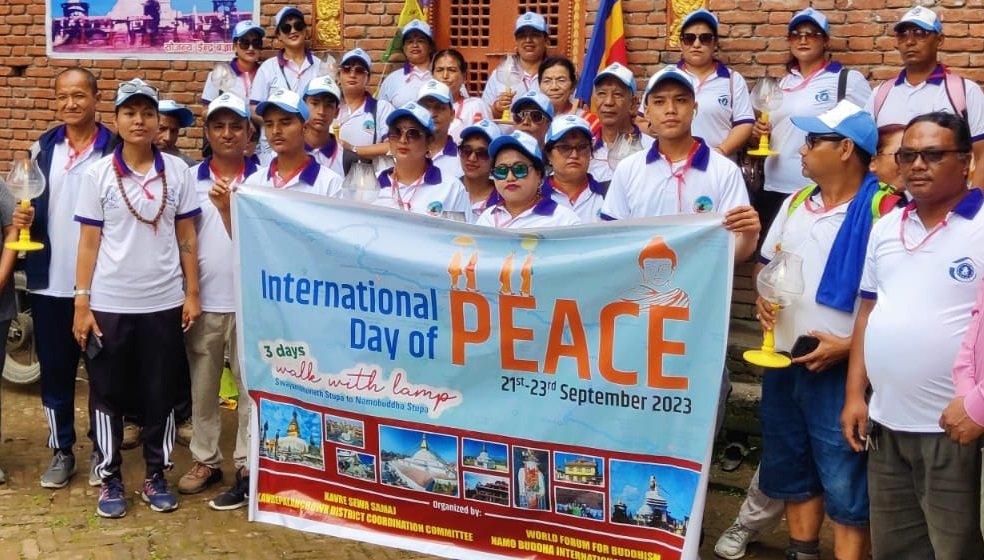
Namo Buddha Dyokshen a sacred Royal pilgrimage storage site located center of the town Panauti. It is renowned for its association with the benevolence compassion and a significant event from his previous lives.
According to Buddhist, Namo Buddha is the site where Prince Siddhartha, in one of his previous lives, encountered a starving tigress and her cubs while on a hunting trip. Moved by compassion, the prince Mahasatwa offered his own body to the tigress to save her and her cubs from starvation. This selfless act of compassion is considered a powerful symbol of the self-sacrifice teachings on loving-kindness and compassion.
Legend says that in the ancient age of Satya/Tetra Yuga?, King Maharatha ruled a kingdom in Rosi Valley with a population of about five thousand in the capital town of Panchali (Panauti). The youngest prince Mahasatva was born in the Panchali palace, a Sacred Land about 6000? years ago (3500 years before Gautam Buddha). In the memory of the then king a Dyokshen was built by Malla king at 15th century for the memory of the prince Mahasatwa. It is believed the Prince Mahasatwa was enlightened with his compassion about 6000 years ago. As a result of this legend, Namo Buddha became a sacred site of pilgrimage for site for local community and growing international, who come to pay homage to the Prince’s compassion and reflect on the virtues of generosity and altruism.
Namo Buddha Dyokshen holds great spiritual and cultural importance for both local residents and Buddhist pilgrims from around the world, serving as a place of pilgrimage, meditation, and contemplation in the serene countryside of the Kathmandu Valley.
Panauti – is a historic town located in the Rosi Valley of Nepal, renowned for its rich cultural heritage, traditional architecture, and religious significance. Indreswor Temple, also known as Indreshwar Mahadev Temple, is one of the prominent religious landmarks in Panauti.
The history of Panauti dates back several centuries, and it was once an important trading center along the ancient trade routes connecting Tibet and India. The town is characterized by its well-preserved Newari architecture, with intricately carved wooden temples, pagoda-style roofs, and narrow cobbled streets.
Indreswor Temple, dedicated to Lord Shiva, is one of the oldest and most revered temples in Panauti. It is believed to have been built in the 13th century during the Malla period, a time of great artistic and architectural flourishing in the Kathmandu Valley. The temple’s architecture reflects the Newari style, with exquisite woodcarvings, statues, and ornate decorations.
The temple complex also includes other smaller shrines dedicated to various Hindu deities, as well as a sacred pond known as Indreswor Pond. The pond is considered holy by devotees, who come to bathe and perform religious rituals.
A famous Uttar Prayag is known as Triveni confluence of three rivers Lilawati, Padmawati and Rudrawati where king of heaven Indra was freed from curses (shrap) of Maharsi Gautam. It is one of the biggest pilgrimages location of Hindus.
Overall, Panauti and Indreswor Temple are integral parts of Nepal’s cultural heritage, offering visitors a glimpse into the country’s rich history, spirituality, and architectural beauty.
Namo Buddha Higher Secondary School – Namo Buddha Higher Secondary School is a well-known educational institution located in the Namo Buddha area of Kavrepalanchok District, Nepal. It provides education at the secondary and higher secondary levels.
As a prominent educational institution in the region, Namo Buddha Higher Secondary School plays a crucial role in providing quality education to students from the surrounding areas. It likely serves as a vital resource for local residents, contributing to the intellectual and social development of the community.
Principle of this school is chairman of Namo Buddha International Cities of Peace and actively participating this Peace Walk since 2017. They are performing the cultural dance and community engagement at each year event.
Namo Buddha – Namo Buddha, also spelled Namobuddha, is a sacred Buddhist pilgrimage site located in the Kavrepalanchok District of Nepal, near the town of Panauti. It is renowned for its association with the Buddha and a significant event from his previous lives.
In the waxing phase of the moon, during the month of Kartik (Oct/Nov). The royal families of Panchal (Panauti) were hunting in the Hiranyagiri Gandhmadan Parbat (the Kusume Community Forest). The three princes Mahadeva, Mahapranav and the youngest prince Mahasatwa (Tib. Semchen Chenpo) and their parents King Maharath and Queen Satyawati were participating in the royal hunt. Under the full moon they were enjoying the hunt even into the late hours. During the night of Purnima (full moon) the three brothers were wandering through the dense forest in moonlight. On the way back to the royal hunting camp they encountered a lean and thin tigress which was unable to move having just given birth to five cubs. They decided not to kill the weak tigress and her new cubs and they continued towards their camp. The youngest prince Mahasatwa who was enlightened with ‘Bodhisatwa” and had pity for the weakened tigress, was unable to express his pity to his brothers. He made an excuse that he needed to relieve (toilet) himself. The Two princes Mahadeva and Mahapranav continued towards camp while Mahasatwa returned to the starving tigress and her five cubs.
He was enlightened with Avayadan and, without the knowledge of the others he quietly and without hesitation offered up his body to save the life of the starving tigress and her recently born five cubs.
History records in the Swayambhu Puran that Siddhartha Gautam Buddha came to Kathmandu about 2,500 years ago, at the time of the 7th Kirati King Jitedasti. At the same time he visited Hiranyagiri Gandhmadan Parbat to pay homage to the youngest prince Mahasatva’s memorial where the prince had sacrificed (at the top of the hill) himself to save the tigress and her family. He had mediation for a month where Mahasatwa’s left body was buried (present- Namo Buddha stupa). Gautam Buddha made three circumambulations of the mound where Mahasatwa’s body was buried and he proclaimed saying “न:म बुद्ध (Nama Buddha)” (Homage to the Awakened) bowing to mound and henceforth this mound became known as “न:म बुद्ध”. According to the Jatakas and several Sutras, Mahasatva was one of Buddha Shakyamuni’s former incarnations.
The main attraction at Namo Buddha is the Thrangu Tashi Yangtse Monastery, a Tibetan Buddhist monastery perched atop a hill overlooking the surrounding countryside. The monastery was founded in the 1970s by the 9th Khenchen Thrangu Rinpoche, a prominent Tibetan Buddhist master, to commemorate the site’s significance.
Visitors to Namo Buddha can explore the monastery grounds, which include prayer halls, stupas, and meditation caves. They can also participate in meditation sessions, prayer ceremonies, and religious festivals held throughout the yea
Namo Buddha holds great spiritual and cultural importance for both Hindus and Buddhist and even other religious pilgrims from around the world, serving as a place of pilgrimage, meditation, and contemplation in the serene countryside of Nepal.
